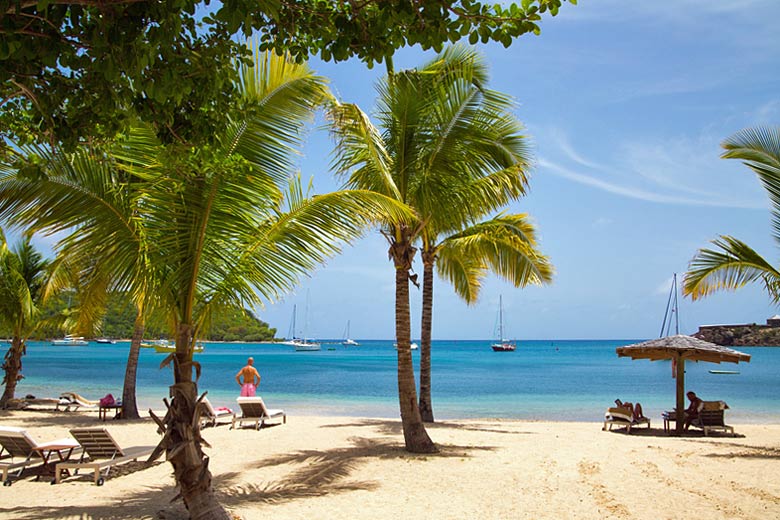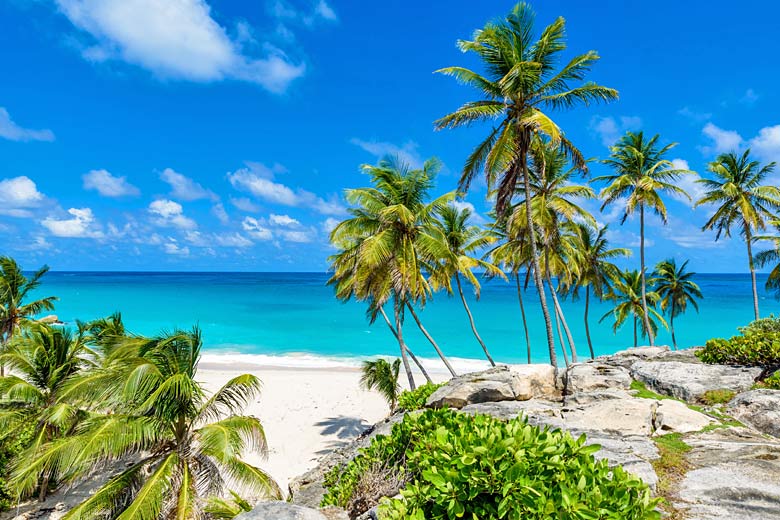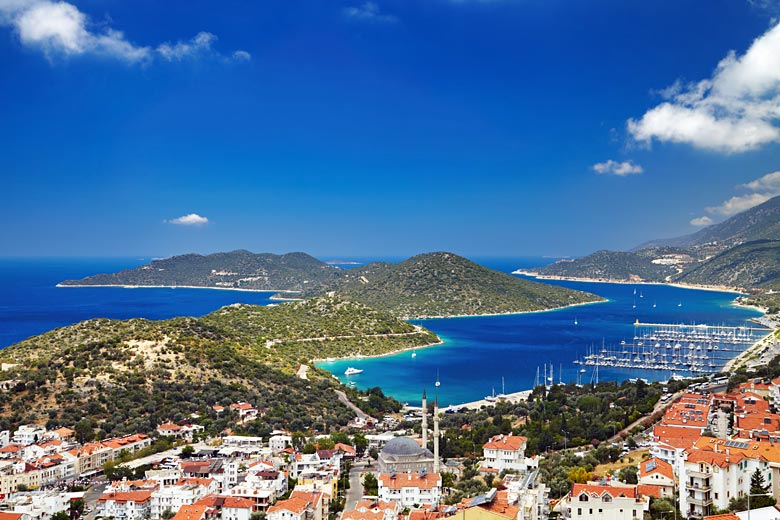Introducing Mexico's Caribbean coast: where to go, stay & play
If you're looking for the perfect combo of beach vibes, local culture, lively entertainment and wonderful wildlife then our beginner's guide to Mexico's Caribbean coast will give you the overview you need to plan your very own dream holiday.
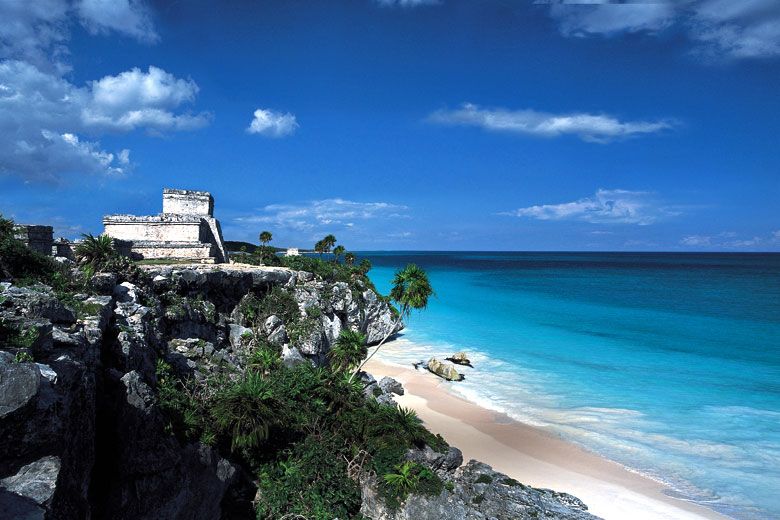
So, prepare to don your sombrero and become one of the more than 30 million visitors who choose to spend their holidays sipping margaritas in Mexico* - aribba!
Getting to Mexico: see the latest offers on holidays to Mexico's Caribbean coast* with TUI.
A mini Mexican geography lesson
One of the first things you'll notice when you're planning your trip to Mexico's Caribbean coast is that the region seems to have quite a few other names, such as the Yucatan Peninsula, Quintana Roo and the Mayan Riviera.
It can be quite confusing if you're new to Mexico until you have a chance to wrap your head around the area's unique geography and understand the variety of atmospheres and activities on offer along the coast for different types of holidaymakers.
Mexico is a vast country; it's fifteen times bigger than the UK. Unless you're off to explore Mexico City or one of the handfuls of popular inland destinations, you'll find the main resorts in Mexico are understandably sprinkled along the country's beautiful coastline.
If you're swimming in the sea at one of the glitzy resorts in the west of Mexico (think Cabo San Lucas or Puerto Vallarta), you'll be in the Pacific Ocean off Mexico's Pacific coast*.
However, if you've decided to holiday on the Caribbean side, you'll be on Mexico's Yucatan Peninsula, that's the bit that juts out into the Gulf of Mexico.
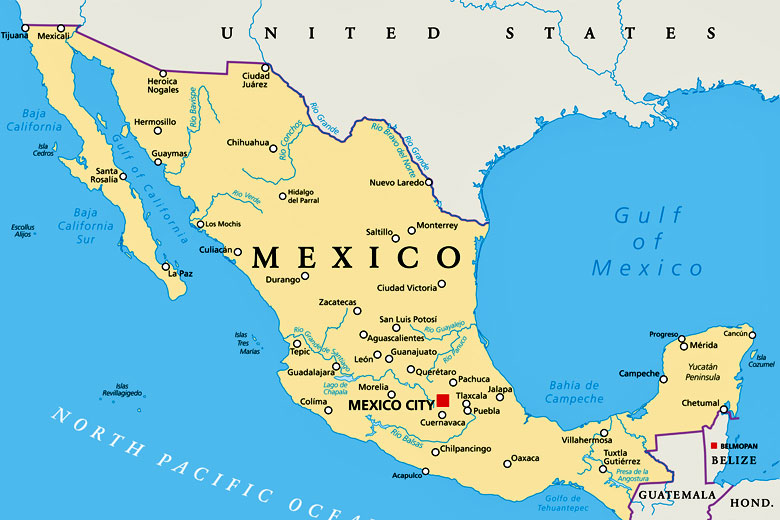
This is home to two different Mexican states: Yucatan (which actually has its own northern beaches called the Emerald Coast) and Quintana Roo, home to the entire length of Mexico's Caribbean coastline.
It's often called the Mayan Riviera because of its historical connections with the ancient Mayan people and many excursions on offer here focus on exploring Mayan civilisation.
There's also a newer tourist region a little further south along Mexico's Caribbean coast towards the Belize border known as the Costa Maya; this includes natural wonders such as the Sian Ka'an Biosphere Reserve making it perfect for eco-lovers.
Which resort is right for you?
Most of the famous places you've heard of in this part of Mexico are strung in a line down the eastern stretch of shore. From Puerto Morelos to Tulum, these include Playa del Carmen, Cancun and Akumal Beach.
Cancun, at the northern tip of the peninsula, is the jumping-off point for almost all new arrivals heading to the Caribbean coast and is the second most popular place to fly into in Mexico after the capital city.
Most transfers drive down Highway 307, which also serves the palatial all-inclusive beachfront resorts that enjoy private stretches of sand, and this same road goes all the way to Belize.
Cancun
While Cancun* is the location of many of Mexico's biggest resorts the city is technically not part of the Mayan Riviera itself and has a slightly different vibe. It's a large and lively place where as well the fantastic beaches, clubs, bars, restaurants and shops are a big draw.
Cancun has a reputation for being the coast's party town and the restaurant scene undoubtedly serves up some of the best and most diverse cuisines in the entire country but you're equally likely to enjoy a casual taco in a low-key cantina.
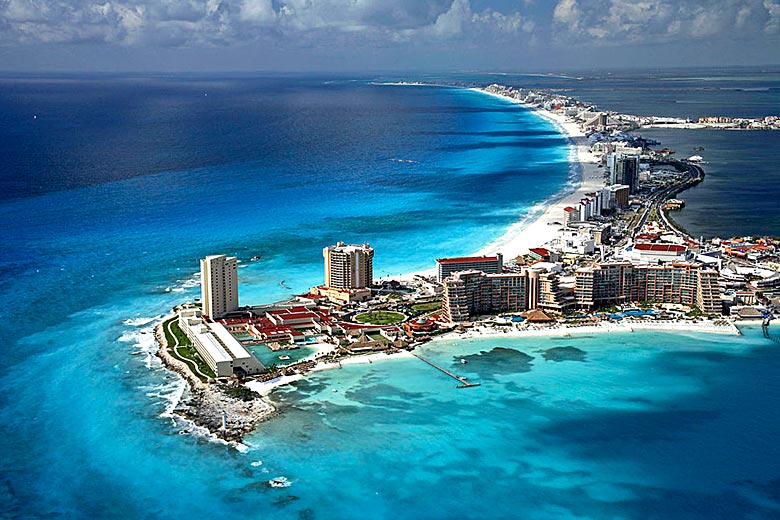
Activity seekers and nature lovers are also in for a treat; you can try every type of water sport off the coast here as well as golfing, horse-riding and wildlife encounters. Plus, there are plenty of day trips to places like Isla Mujeres* and Isla Holbox*.
Puerto Morelos
Lots of famous holiday resorts around the world started life as laid-back fishing villages but Puerto Morelos* still feels very much like a quaint and sleepy small town to this day.
Puerto Morelos plays host to a few small hotels and yoga retreats, and is popular with off-the-beaten-track tourists but still within a short drive of all the big resorts.
This gives you the best of both worlds, especially if you're here in Mexico for the stunning sea and the white sand as opposed to the shopping.
Playa del Carmen
A perfect option for those who seek the nightlife of Cancun but also crave a hint of the fishing village vibe, Playa del Carmen* (or just Playa, as it is affectionately known) is an ideal middle ground and a classic holiday resort with everything on offer.
As well as the bustling pedestrianised strip of Fifth Avenue with all the souvenir shops and boutiques you could wish for, there's a long beach backed by bars and restaurants.
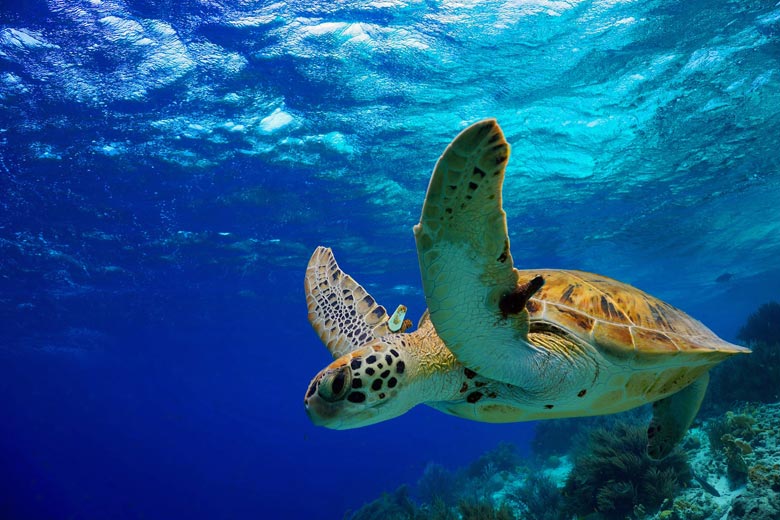
For marine life enthusiasts, it is very much worth a look: one of the best places in the world to swim with turtles is at Akumal Beach (it means 'place of the turtles'), which is just outside Playa del Carmen on the way to Tulum.
Tulum
Tulum has carved a special niche for itself when it comes to attracting discerning tourists to the Mayan Riviera. What was once a 2 km stretch of beach famed for its archaeological ruins has become one of the hippest places to holiday in the entire region.
Just because it's cool doesn't mean it has lost the laid-back vibe. Tulum* is the alternative choice for a young and fashionable crowd; think yoga retreats and celebrity visitors who enjoy Tulum's sustainable emphasis.
Tulum's beautiful white powder sands are idyllic but there are strong currents in the sea around this area so watch out with little ones. Luckily, you're never far away from a cenote; these natural lagoons are dotted around Mexico's Caribbean coast and make swimming snorkelling or diving an absolute delight.
Mexico's vital stats
- Flight time from the UK - around 10 hours
- Entry, exit & visas - UK passport holders, along with many other nationalities, can buy a Mexican Tourist Card on arrival, which is valid for 180 days
- Currency - favourable exchange rates have helped more holidaymakers to venture to Mexico, and while the peso is still the official currency, you can easily use US dollars in many places here
- In an emergency - call 911
- Voltage - most of the coast runs on 110v so many European appliances may need a converter - you should investigate before your trip unless you have dual voltage appliances (110-220v)
- Infrastructure - this area has a safe and modern road network, good reliable electricity supply and excellent phone and internet service meaning you can enjoy a beach holiday but still have all your mod cons.
When to visit
Mexico's Yucatan Peninsula has a truly tropical climate with daytime maximum temperatures ranging from the high twenties in winter to the low thirties in summer, and a sea that is always warm (between 26°C to 29°C).
Rainfall is at its highest between June and October, peaking in September, though with temperatures in the low thirties you may be ok with a passing downpour.
There is still a lot of sunshine during this period, never fewer than six hours per day on average, which is partly because much of the rain falls during the night.
| Jan | Feb | Mar | Apr | May | Jun | Jul | Aug | Sep | Oct | Nov | Dec | |
|---|---|---|---|---|---|---|---|---|---|---|---|---|
| Maximum daytime temperature °C |  28 28 |
 28 28 |
 30 30 |
 32 32 |
 32 32 |
 32 32 |
 32 32 |
 33 33 |
 32 32 |
 30 30 |
 29 29 |
 28 28 |
| Hours of sunshine (daily) | ||||||||||||
| Days with some rainfall |  6 6 |
 5 5 |
 3 3 |
 3 3 |
 7 7 |
 11 11 |
 11 11 |
 13 13 |
 14 14 |
 13 13 |
 8 8 |
 7 7 |
| Sea temperature °C |  26 26 |
 26 26 |
 26 26 |
 26 26 |
 27 27 |
 28 28 |
 28 28 |
 29 29 |
 29 29 |
 28 28 |
 28 28 |
 27 27 |
The above guide shows the weather in Cancun. Although conditions are similar along the coast, you can read more about the weather is like at other resorts and see when we think is the best time to go to Mexico's Caribbean coast.
Although this part of Mexico makes a wonderful holiday destination all year round, there is a marked difference between winter and summer weatherwise, which is to do with how heat and humidity affects conditions.
While there's no great leap in temperature from 28°C in winter and 33°C in summer, when paired with the different levels of heat and humidity (moderate in winter; very high in summer), the picture changes significantly and has a greater effect on how it feels.
Typically, winters are so popular because they're dry and hot without being too hot, while summer can feel more oppressive and see more rainfall.
However, don't be put off visiting in summer, it's just important to know the difference - you can sometimes find the best deals on holidays to Mexico's Caribbean coast during the summer months.
Ready to discover Mexico for yourself? Check out the latest deals on holidays with TUI.
More about Mexico - Caribbean Coast
- Overview
- Best time to visit
- Weather by month
- 5-day weather forecast
- Destinations
- Travel advice
- Deals & discounts
Mexico - Caribbean Coast by month
Jan Feb Mar Apr May Jun Jul Aug Sep Oct Nov Dec
Explore holidays in the sun for less
- Beach holidays
- Family holidays
- City breaks
- Summer holidays
- Winter sun holidays
- Holiday offers
- Top travel brands
- Airlines & flights
- Discount hotels
- Airport parking deals
- TUI
- Jet2holidays
- easyJet holidays
- Love Holidays
- January sales
Airport parking
- Manchester Airport
- Stansted Airport
- Bristol Airport
- Luton Airport
- Birmingham Airport
- Edinburgh Airport
- Gatwick Airport
- Glasgow Airport
- Newcastle Airport
Airport lounges
- Manchester Airport
- Birmingham Airport
- Bristol Airport
- Edinburgh Airport
- Glasgow Airport
- Heathrow Airport
- Newcastle Airport
- Stansted Airport
- Gatwick Airport
Be inspired
Get your weekly fix of holiday inspiration from some of the world's best travel writers plus save on your next trip with the latest exclusive offers
We promise not to share your details














